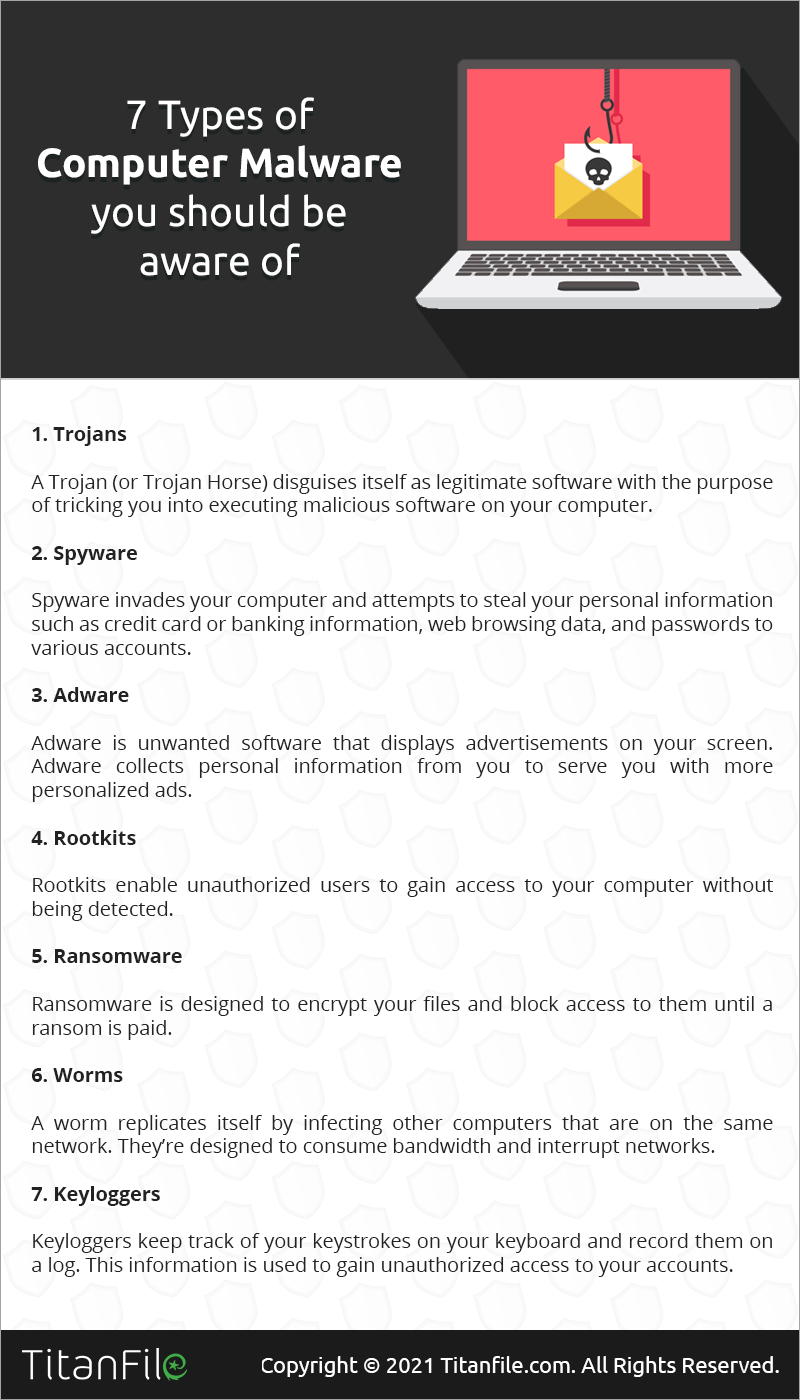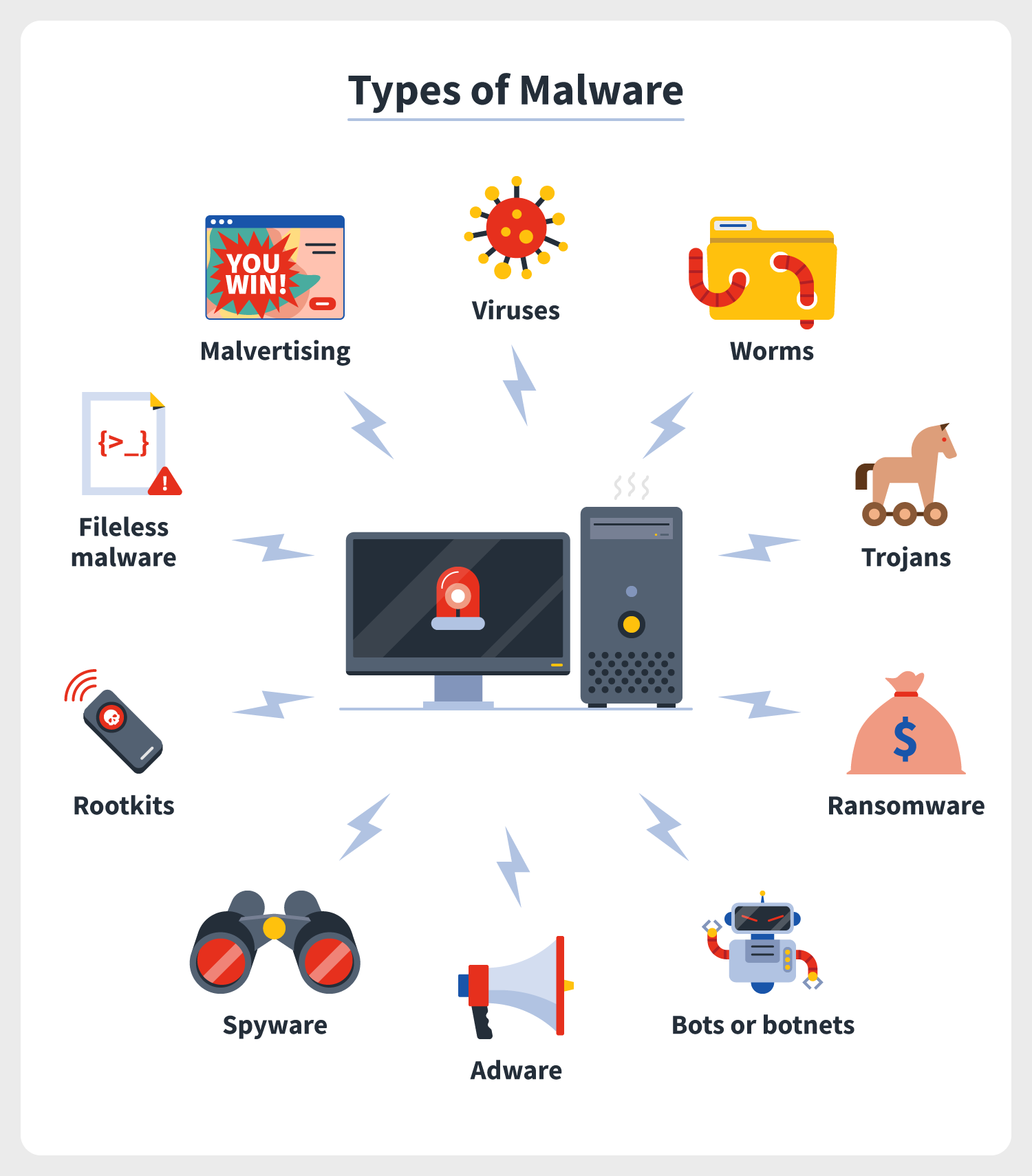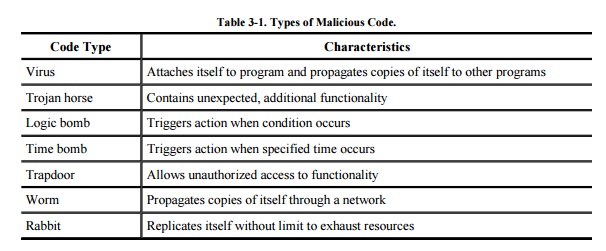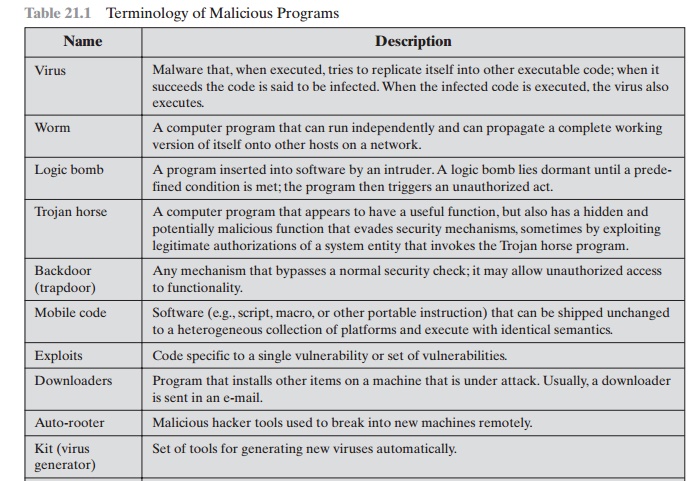Explain Different Types of Malicious Code
The techniques malware maker design to avoid detection and analysis of their malware by security systems. The main difference between viruses and other malicious codes is the fact that viruses attach themselves to programs and propogates copies of itself.

7 Types Of Computer Malware And How To Prevent Them In 2022 Titanfile
The virus spreads when an infected.

. Malicious code includes a variety of threats such. Explain the key differences between viruses and other malicious codes. Cross-Site is another type of injection breach where attackers send malicious scripts from websites that are deemed responsible or reputed.
Evasion is another type of malware attack. Worms Worms replicate themselves on the system attaching themselves to different files and looking for pathways. For instance a virus can be a time bomb if the viral code that is spreading will trigger an event after a period of time has passed.
Identify at least three 3 different types of viruses and describe the main differences between each one. After the execution of its code the control returns back to the main program. A common type of malicious code is the virus which is a little program attaching to other programs or files and will copy itself in a computer and even spread to other networked computers.
The different types of malicious attacks are as follows. As viruses worms Trojan horses ransomware and bot programs. TABLE 3-1 Types of Malicious Code.
Explain the key differences between viruses and other malicious codes. These types of programs can self-replicate and can spread copies of themselves which might even be modified copies. Other malicious codes simply trigger other codes to happen replicates other codes and allows other codes to enter.
This type of virus infects the system by appending itself to the end of a file. Example- SQL Injection code Injection log Injection XML Injection etc. View CIS 170 Week 5 Discussion promptdocx from COM 201 COM2 at Strayer University.
Week 5 Discussion Virus and Malicious Code Please respond to the following. A malware package that combines the characteristics of multiple kinds of the malicious program like Trojans viruses worms seeking to exploit more than one system vulnerability. The different types of Computer virus are Memory-Resident Virus Program File Virus Boot Sector Virus Stealth Virus Macro Virus and Email Virus.
It takes advantage of the security failures of a system to target it. DNS Spoofing is a type of computer security hacking. Next explain both the potential threat posed by viruses and other malicious codes and their main effects on computers and productivityDiscuss the fundamental lesson s.
Spyware Its purpose is to steal. It also has the ability to reproduce in large numbers. Its execution is not even noticed.
The types of malicious code are. Various types of viruses. Worms A worm is a malicious software which similar to that of a computer virus is a self-replicating program however in the case of worms it automatically executes itself.
It changes the start of a program so that the control jumps to its code. A worm is a malicious program that uses computer networks to spread itself. A type of malware that uses malicious code to install software that seems ok but is hidden to create back doors into a system.
Furthermore two or more forms of malicious code can be combined to produce a third kind of problem. Viruses often spread to other computers by attaching themselves to various programs and executing code when a user launches one of those infected programs. The difference is that a worm operates independently of other files whereas a virus depends on a host program to.
Thus malware includes computer viruses worms Trojan horses and also Spyware programming that gathers information about a computer user without permission. Unlike a virus a worm is a standalone piece of malicious software that replicates itself in order to spread to other computers. It is the attack in which some data will be injected into a web application to manipulate the application and fetch the required information.
Next explain both the potential threat posed by viruses and other malicious codes. A virus needs a host program to write its code on that program and replicate. Attackers inject malicious codes into trusted websites and applications and when a user visits such infected web page the malicious JavaScipt code is executed on the users browser.
Viruses can range in severity from simple programs that display a message or graphic as a joke to more malevolent code that will destroy files or reformat the. This typically causes loss or theft of data from an external source. Identify at least three different types of viruses and describe the main differences between each one.
Viruses can range from being relatively harmless to causing significant damage to a system. The kinds of malicious code are summarized in Table 3-1. A virus is a computer program that can replicate or make copies of itself and spread to other files.
Types of Malware. Two of the most common types of malware are viruses and worms. Mobile Malicious Code - web documents often have server-supplied code associated with.
Viruses are usually spread through a word file or executable file. A virus is a form of malware that is capable of copying itself and spreading to other computers. From the first e-Activity explain the key differences between viruses and other malicious codes.
Viruses A Virus is a malicious executable code attached to another executable file. Worms are pieces of malicious code making copies of itself. Malicious Code Software programs having malicious intent which are designed to infiltrate and damage computers without the users are.
To be classified as a virus or worm malware must have the ability to propagate.

10 Types Of Malware How To Prevent Malware From The Start Norton


Comments
Post a Comment